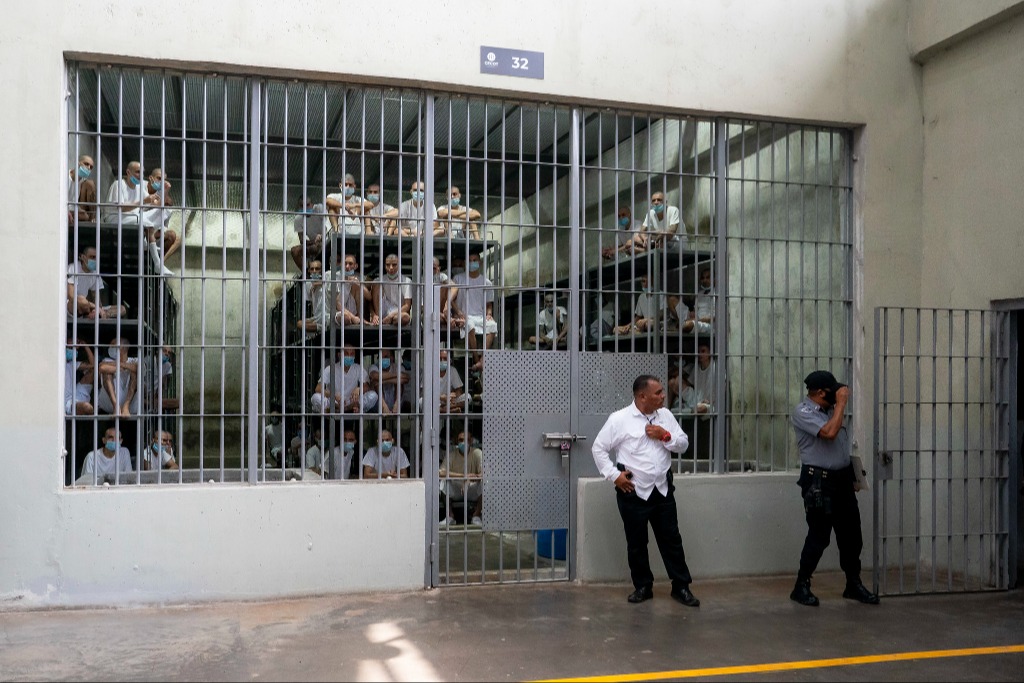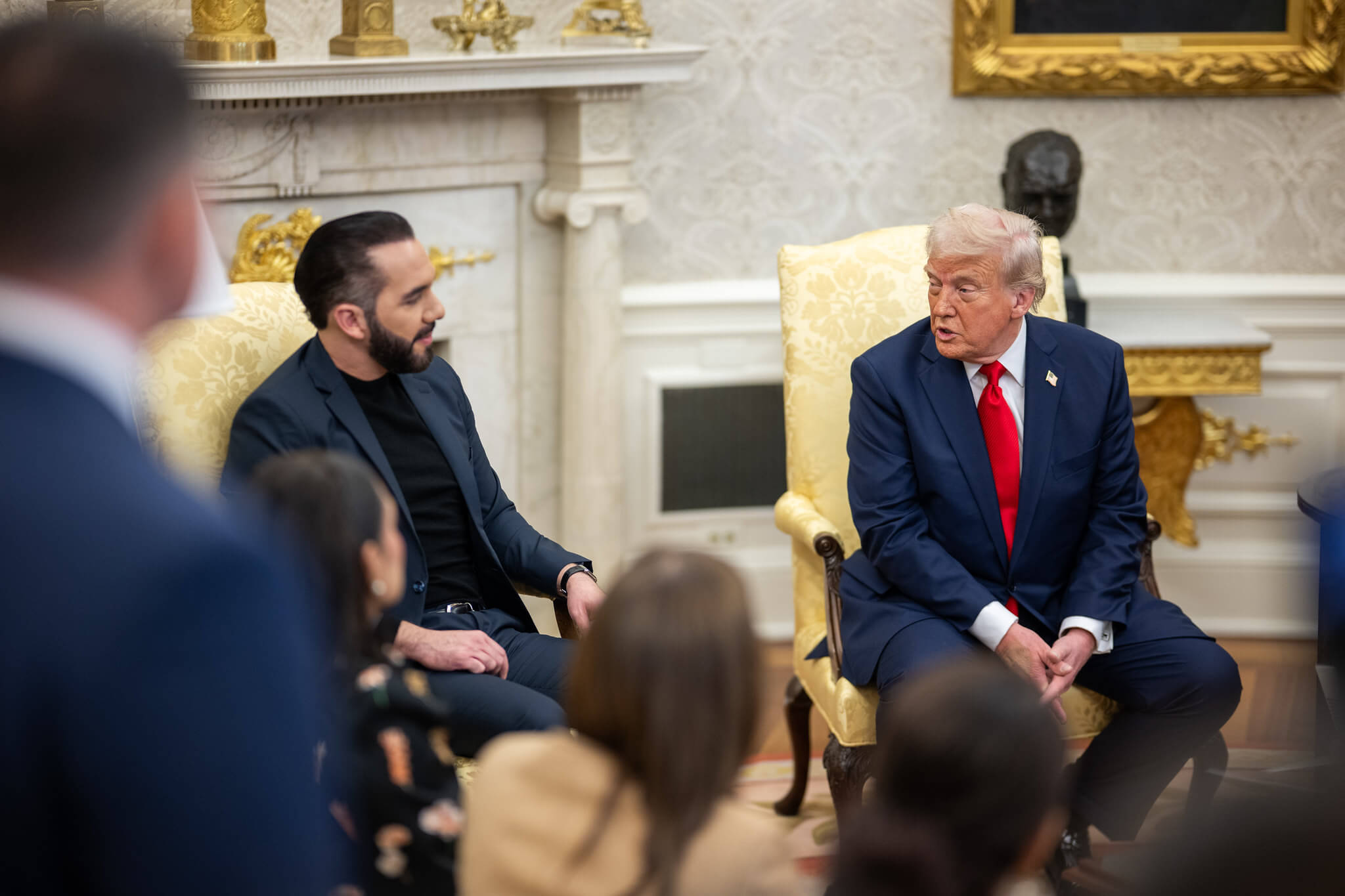It’s the National Security, Stupid
Finland’s NATO bid has raised concerns about Russia’s reaction. But the Finnish comprehensive security concept, with its emphasis on foresight, has effectively neutralized the eastern neighbor’s threats.

Published by The Lawfare Institute
in Cooperation With

Finland has been edging closer to NATO membership this spring. But the historic U-turn in the Nordic country’s hitherto militarily nonaligned security policy has raised concerns about possible retaliation from neighboring Russia. Finland shares a 830-mile-long border with its eastern neighbor—a geopolitical fact that many international observers have only recently found out. Finland, however, has never lost sight of the long eastern border, and it is not an exaggeration to say that Finns have been preparing for potential aggression coming from the east all their history. As then-Defence Minister Jyri Häkämies said in a speech at the Center for Strategic and International Studies in Washington, D.C., in 2007: “[G]iven our geographical location, the three main security challenges for Finland today are Russia, Russia and Russia.”
The key to understanding Finland’s approach to national security is in the country’s history with its eastern neighbor: Different Russian state formations have attempted to invade Finland at least once every century. Until the Finnish War of 1808-1809, when Sweden lost Finland to Russia, Finland belonged to the Kingdom of Sweden for several centuries. It is indicative of the neighborly relations between Finland and its western versus eastern neighbor that Finland and Sweden continue to have the closest possible bilateral relations and often make significant foreign policy decisions in close coordination (such as EU accession in 1995 and now the decision to seek NATO membership). One hundred years as an autonomous Grand Duchy of the Russian Empire, in contrast, prompted Finland to strive for independence and gain it in 1917.
The next significant episode of Finnish-Russian history that continues to define the Finnish approach toward Russia was the Winter War in 1939-1940, when the Soviet Union attempted to invade Finland and failed. While the success of managing to remain independent and avoid the fate of the Baltic neighbors as a satellite state of the Soviet Union is an integral part of Finnish identity, the war also taught the Finns a lesson: In the words of Gen. Adolf Ehrnrooth, a veteran of the war, “[N]ever again alone.” That is what the Finnish determination to join NATO now boils down to—never again having to stand up to Russia alone.
Finland’s “NATO Option”
Finland has always had a pragmatic, largely nonideological approach to security policy. Both nonalignment and the decision to join NATO were practical considerations. Until this year, full-fledged NATO membership was not considered necessary and was also seen as a potential provocation toward Russia. Because of its long border with Russia, Finland favored maintaining good relations with its eastern neighbor to avoid costly tensions at the border. But with Russia’s full-scale attack on Ukraine on Feb. 24, it became evident that no amount of self-restraint can guarantee security for a country in Russia’s direct vicinity.
The historic Finnish bid for NATO membership did not come out of the blue. An important part of Finnish security policy had been the so-called NATO option—to keep the option to seek membership open, should security-related circumstances change. To enable swift accession if deemed necessary, Finland has been pursuing the closest possible partnership with NATO just below the threshold of membership since the 1990s. Finland joined NATO’s Partnership for Peace in 1994 and has been an Enhanced Opportunity Partner since 2014. It is also one of the most active countries in NATO’s missions and operations. The Finnish Defence Forces have deliberately aimed at reaching a high level of interoperability with NATO structures. For example, Finnish forces regularly conduct joint exercises and bi- and trilateral defense cooperation with NATO member states so that almost instant operational readiness is guaranteed after accession.
The NATO option also had an important signal function toward Russia. The Russian “threat tradition” has been a part of the bilateral rhetoric since at least 2016. The NATO option was a reminder to Russia that Finland may change its mind about nonalignment if Russia goes too far. Russia, for its part, regularly issued threats regarding possible consequences of Finnish NATO membership—for example in 2016 when Vladimir Putin stated that Russia would move troops to the Finnish border in the event of Finland joining NATO.
Comprehensive Security Beyond Military Defense
Militarily, Finland has continuously maintained a high defense capability. Finland kept a conscription army when most Western European states abolished their own. The conscription army gives the Finnish Defence Forces a wartime strength of 280,000 troops and additional 870,000 reservists in a country of 5.5 million people. The Air Force is also extremely well-equipped. The government’s latest aircraft purchase, in December 2021, included 64 F-35 fighter jets, which are notably compatible with NATO forces and will be a gamechanger for Nordic and Baltic air defense. With 1,500 systems, Finland also has one of the strongest artilleries in Europe. When looking at the current situation in Ukraine, where one of the greatest challenges Ukrainian forces are facing is how to counter Russia’s strong artillery fire on a more than 620-mile-long front, Finland’s motives for investing in artillery become clear. Finland’s defense planning and arms procurement decisions over the past 20 years have been based largely on a strategic analysis of potential threat scenarios from the early 2000s. Russia’s current war in Ukraine has proved Finnish foresight correct. Therefore, Finland is well prepared for its current situation.
But military defense is just the tip of the iceberg. The Finnish comprehensive security concept also encompasses the economy, infrastructure, security of supply, civil defense, and overall societal resilience. Everything in Finnish society is thought through from a security perspective. Every building above a certain size—including all apartment buildings and public facilities—are required to have civil shelters. In the capital city of Helsinki, a system of tunnels can provide shelter for up to 900,000 people, which is more than Helsinki’s population. The construction blueprints of all strategically located bridges include a mechanism to attach explosives onto the bridge to disrupt the forward movement of an enemy in case of an attack. Finland also maintains emergency reserves of critical supplies. These include grain to last at least six months, medicine to last three to 10 months, and fuel for five months. The reserves have been expanded since Russia’s invasion of Ukraine. The population is also recommended to have personal emergency reserves to last at least 72 hours.
Finnish comprehensive security is based on two main principles: preparedness and foresight. Preparedness measures include contingency planning, continuity management, advance preparations, training, and preparedness exercises to enable proaction instead of reaction. Foresight consists of monitoring changes and trends in the operational environment and reviewing possible scenarios, as well as assessing prior experience with crisis situations. Since 1961, the Finnish Defence Forces have been offering defense courses for people holding significant positions in multiple sectors such as business, politics, administration, civil society, and other relevant fields on both the local and national levels. The participants build an essential network of central security actors in times of crisis. Apart from these more high-level courses with selected participants that take place four times per year, national defense courses are also offered to ordinary citizens—specifically to women, who are exempt from conscription. The courses’ popularity has surged since Russia’s invasion of Ukraine.
Preparedness Pays Off
This foresight and focus on self-sufficiency has effectively neutralized Russia’s threats. On May 14, Russia cut off electricity exports to Finland with only one day’s notice. Finland used to import around 10 percent of its electricity from Russia, but Fingrid—Finland’s electricity grid operator—began to limit its import volume from Russia in April in anticipation of potential disruptions. Finland has also invested in wind energy, and a new nuclear power plant has been in test use since March 2022 and will become fully operational in the winter. It is estimated that Finland will be electrically self-sufficient by 2023 and will likely be a net electricity exporter.
One week later, on May 21, Russia also stopped natural gas deliveries to Finland after Helsinki refused to consent to Moscow’s rouble payment scheme. The impact remained limited. While some industries—such as the forest-based and chemical industries as well as bakeries—use gas for production, they had already started looking for alternative sources in summer 2021 when the Russian gas company Gazprom did not fill its reservoirs reliably. In 2020, Finland imported 67 percent of its natural gas from Russia, but gas made up only 6 percent of Finland’s total energy use. In addition to three already existing liquefied natural gas (LNG) terminals, in May the Finnish company Gasgrid Finland Oy and U.S.-based Excelerate Energy Inc. signed a 10-year lease agreement for an LNG terminal ship, which secured Finland’s security of supply in the coming winter.
Finland also moved fast to diversify its oil supply following the invasion of Ukraine. In 2020, 86 percent of Finland’s oil imports came from Russia, which accounted for 21 percent of the country’s total energy usage. However, the Finnish company Neste reported that it had replaced 85 percent of Russian imports through the end of April with other non-Russian oil, such as North Sea oil, but will continue receiving crude oil from Russia in its refinery until July 2022. Neste had already been reducing imports of Russian oil gradually in 2021. Coal will also soon be phased out entirely, and Finland has enough of its own capacity to replace Russian wood imports. The downside is that this will inevitably lead to higher prices for Finns. But the consensus has so far remained strong in Finnish society that no price is too high when it comes to energy independence from Russia and solidarity with Ukraine.
Finland has always prioritized energy self-sufficiency and kept a diverse energy source portfolio to avoid dependencies. The security policy implications of Russian energy have constantly been a factor in Finland’s risk calculations. A government decision in 2014 to approve a contract between the Finnish Fennovoima and the Russian Rosatom for a new nuclear power plant was thus highly disputed and the Green Party even left the government over the issue. Fennovoima terminated the contract in May 2022, after it had been left pending final government approval since 2015.
Before Russia’s attack on Ukraine, Finland had an export volume to Russia somewhat above the EU average at around 5 percent. But by April, the volume had already decreased by 70 percent. This decrease was largely due to voluntary withdrawals by Finnish companies from the Russian market starting in the first weeks of the invasion—even before Western sanctions came into effect. The pressure of public opinion to stop doing business with Russia has been very strong. And in early April, Prime Minister Sanna Marin encouraged Finnish companies to terminate any remaining business activities in the Russian market. Whatever little leverage Russia may have had over Finland, it is gone for good.
Don’t Bow to the Bully
On May 18, Sweden and Finland applied for NATO membership. The deliberation process about whether to apply had been swift but thorough. The relevant parliamentary committees prepared assessments of Finland’s changed security situation, and support was secured on all levels of the democratic process. In the last poll before Finland submitted its application, support for NATO membership was at an overwhelming 76 percent and has since risen higher to 79 percent as of late June. In a vote on the matter in the Finnish parliament, 188 out of 200 members of parliament (minus the speaker who does not vote) voted in favor of a bid for NATO membership. Such high support in parliament for NATO membership was largely a bottom-up process. Public opinion had changed almost overnight after Russia’s full-scale attack on Ukraine started. Polls indicate that Finnish support for a bid to join NATO increased from approximately 25 percent to more than 50 percent within three days. In the following weeks, the political parties had to catch up with the swift change in the public mood.
The shift in support is indicative of the pragmatic approach of Finnish politics and society to national security. In opinion polls, opposition to Finland’s NATO membership had prevailed for decades. And before Russia’s attack on Ukraine, only two parties advocated for NATO membership. But for most people and also for the parties previously against membership, it was clear that they could change their mind, should Finland’s security environment change. On Feb. 24, Finland lost any reason not to join NATO, as it became clear that self-restriction was no guarantee of peace anymore with Russia willing to attack its neighbors without provocation. Ensuring the broadest possible consensus on the issue was part of Finland’s comprehensive security thinking: On such an important national security decision, the largest possible majority of society should be on board.
In the final run-up to the official application, Russia had intensified its threats toward Finland and Sweden. On May 14, Finland’s President Sauli Niinistö called Putin to inform him that Finland was about to apply for NATO membership due to the deteriorated security situation since Russia started its war of aggression against Ukraine—implying that Russia’s own actions had prompted this course. The move paid off. A few days later, both Putin and Russian Minister of Foreign Affairs Sergey Lavrov made statements claiming that Finland and Sweden’s membership in NATO membership would not make much difference from Russia’s perspective since both countries were already working closely with NATO. Since the application, Russia has not actively tried to intimidate either applicant country and no expected hybrid scenarios—such as violations of Finnish air space, “deliberate accidents”, or cyberattacks—have occurred so far. After NATO invited Finland and Sweden to join the alliance at the Madrid summit on June 29, Putin stated that their decision to join the alliance is a domestic matter and not a problem for Russia, but added that relations between the countries would become more tense. However, instead of a troop build-up at its border with Finland, Russia reportedly moved equipment away from a military base near Finland, signaling a shift of troops into Ukraine. The Alakurtti military base is a motorized infantry brigade specialized in Arctic warfare. The move indicates that Finland is a very low priority for Russia compared to Ukraine, NATO membership notwithstanding.
Russia’s inaction toward Finland—and a peaceful border between the countries with hitherto no Russian troop build-up—is largely due to the fact that Russian troops are tied up in Ukraine. Future attempts to bully Finland cannot be ruled out. Nevertheless, Russia is likely to climb down from its threats when met with resolution. In Finland’s case, preparedness and determination have so far proved to be a winning strategy when dealing with Russia.





